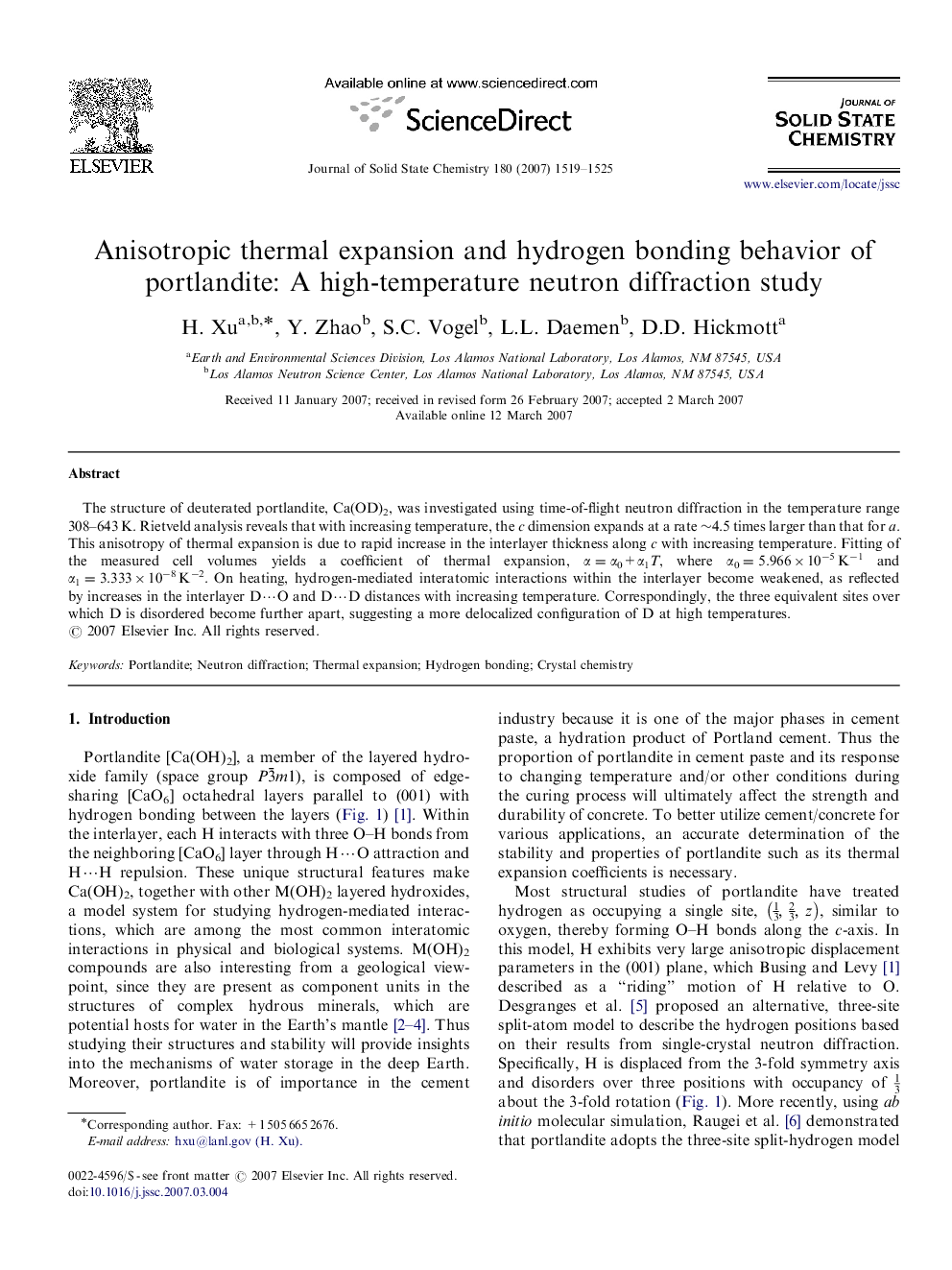| Article ID | Journal | Published Year | Pages | File Type |
|---|---|---|---|---|
| 1333311 | Journal of Solid State Chemistry | 2007 | 7 Pages |
The structure of deuterated portlandite, Ca(OD)2, was investigated using time-of-flight neutron diffraction in the temperature range 308–643 K. Rietveld analysis reveals that with increasing temperature, the c dimension expands at a rate ∼4.5 times larger than that for a. This anisotropy of thermal expansion is due to rapid increase in the interlayer thickness along c with increasing temperature. Fitting of the measured cell volumes yields a coefficient of thermal expansion, α=α0+α1T, where α0=5.966×10−5 K−1 and α1=3.333×10−8 K−2. On heating, hydrogen-mediated interatomic interactions within the interlayer become weakened, as reflected by increases in the interlayer D⋯O and D⋯D distances with increasing temperature. Correspondingly, the three equivalent sites over which D is disordered become further apart, suggesting a more delocalized configuration of D at high temperatures.
Graphical abstractWith increasing temperature, the Ca(OD)2 structure expands ∼4.5 times larger between the [CaO6] octahedral layers than within the layers. Correspondingly, the D-mediated interatomic interactions become significantly weakened, and the three equivalent sites over which D is disordered become further apart, suggesting a more delocalized configuration of D at elevated temperatures.Figure optionsDownload full-size imageDownload as PowerPoint slide
